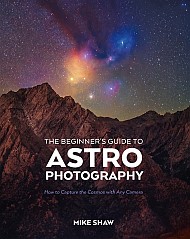Astronomy
U.S. Plan to Drop Some Childhood Vaccines to Align with Denmark Will Endanger Children, Experts Say
The U.S. reportedly plans to overhaul the country’s childhood vaccine schedule. The move could set public health back decades, experts say
IMAP's Instruments Are Coming Online
During the deployment of new space telescopes that are several critical steps each has to go through. Launch is probably the one most commonly thought of, another is “first light” of all of the instruments on the telescope. Ultimately, they’re responsible for the data the telescope is intended to collect - if they don’t work properly then the mission itself it a failure. Luckily, the Interstellar Mapping and Acceleration Probe (IMAP) recently collected first light on its 10 primary instruments, and everything seems to be in working order, according to a press release from the Southwest Research Institute who was responsible for ensuring the delivery of all 10 instruments went off without a hitch.
Disney and OpenAI Signal the Arrival of AI Video Streaming
Disney and OpenAI’s agreement hints at a future in which viewers don’t just choose what to watch but generate it on demand
The Last Meteor Shower of 2025 and the Winter Solstice Align This Weekend
Sky watchers may be tempted out this weekend, when an underappreciated meteor shower will coincide with a new moon and the longest night of year for the Northern Hemisphere
Glowing Arc by Andromeda Might Be Remnants of a Dying Star
Discovered by amateur astronomers, a mysterious arc of gas might be the ghostly remains of a star shedding its outer layers. However, astronomers haven’t reached a consensus yet.
The post Glowing Arc by Andromeda Might Be Remnants of a Dying Star appeared first on Sky & Telescope.
Water Droplet Science
Offshore Wind Farm in China Becomes a Haven for Oysters, Barnacles, and More, Study Finds
A wind farm off the coast of China appeared to boost fish numbers and supported colonies of oysters and barnacles, according to new research
The Hubble Witnesses Catastrophic Collisions In The Fomalhaut System
For the first time, astronomers using the Hubble Space Telescope have spotted a pair of catastrophic collisions in another solar system. They were observing Fomalhaut, a bright star about 25 light-years away, and detected a pair of planetesimal collisions and their light-reflecting dust clouds. The system is young, and the collisions reflect what our Solar System was like when it was young.
Galileo: the journey of satellites 33 and 34
On 17 December 2025, two new Galileo satellites lifted off from Europe’s Spaceport in French Guiana. This was the 14th launch for Europe’s satellite navigation operational satellite programme, reinforcing Europe’s resilience and autonomy. The flight, VA266, was the first launch of Galileo satellites on Europe’s newest heavy-lift launcher Ariane 6.
The satellites, designated SAT 33 and SAT 34, separated from the launcher after a flight of just under four hours. The launch was declared successful after acquisition of signal and the confirmation that both satellites are healthy with their solar arrays deployed.
“With these new satellites, we strengthen Europe’s global navigation services - delivering greater precision, reliability and autonomy in space”, affirmed Andrius Kubilius, EU Commissioner for Defence and Space.
“Galileo stands as the world’s most accurate global navigation satellite system – and today we have increased its reliability and robustness,” said Josef Aschbacher, ESA’s Director General.
The European Space Agency was responsible for carrying out the Galileo launch with Arianespace on behalf of the European Commission. The Galileo satellites were manufactured by OHB, under contract with ESA. Now in orbit, the EU Agency for the Space Programme (EUSPA) brings the satellites into service and oversees their operation.
Post-CM25 industry event online set for 14 January
On 14 January 2026, the European Space Agency (ESA) will hold an online post-CM25 industry event for all ESA industrial partners.
ESA Impact 2025 - October-December
ESA Impact 2025 - October-December
Welcome to ESA Impact, your interactive gateway to the most captivating stories and stunning visuals from the European Space Agency, now in a mobile-friendly format.
Do You Know What Time It Is? If You're On Mars, Now You Do.
Ask someone on Earth for the time and they can give you an exact answer, thanks to our planet's intricate timekeeping system, built with atomic clocks, GPS satellites and high-speed telecommunications networks. Ask for the time on Mars and the answer gets much more complicated.


